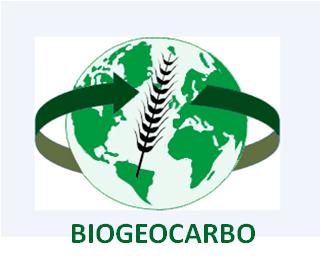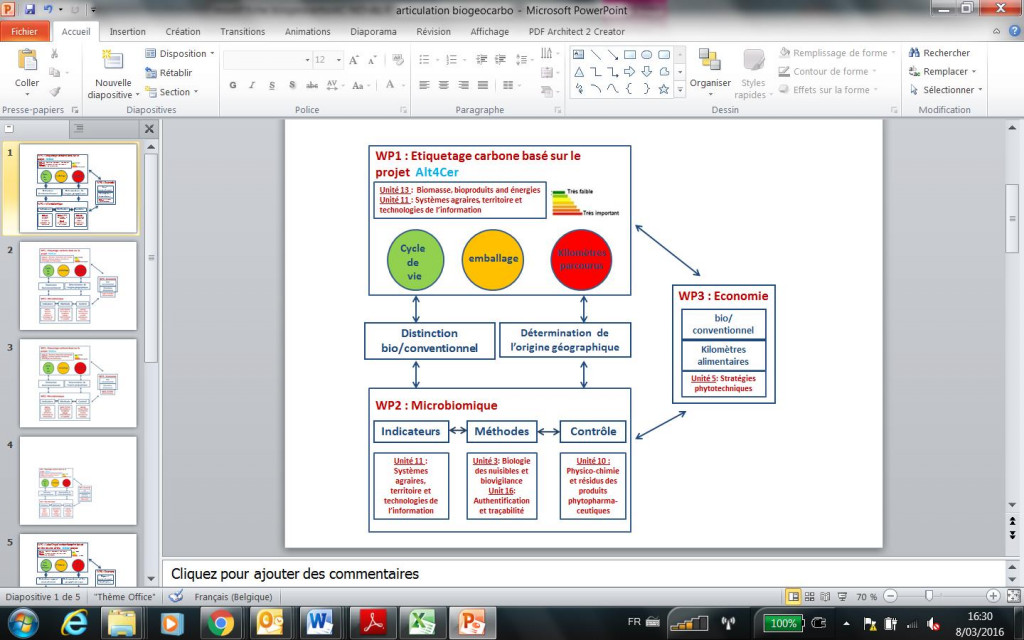Context
There is a growing awareness in the European Union to adopt a behavior in line with sustainable development. This is reflected by a change in some dietary habits to which CRA-W can not remain indifferent.
Consequently, the market share of the organic products is increasing in Europe. The representativeness of organic farming in Wallonia is also steadily growing: 759 organic farmers in 2009 (+ 60% compared to 2004) and 1287 in December 2014. One-tenth of Walloon farmers are organic farmers! Organic production covers 8.6% of the Walloon Utilized Agricultural Area (UAA). The products must follow the organic agriculture specifications and can be specifically labelled as “organic”. In a similar way of responsible consumption and sustainability, a recent survey of the European Commission showed that most of the Europeans care about the ecological footprint of the products they consume in order to fight against global warming and protect the environment. This explains why many countries would like to introduce a labeling allowing to consumers to choose food according to the carbon footprint or the kilometers travelled.
The establishment of such labeling implies the knowledge of the production modes. Production methods also require special requirements when products are of differentiated quality, such as organic products. It is therefore important to have methods to determine the carbon footprint of food products but also methods allowing the distinction between conventional and organic products.
Cereal production being the most representative annual crop in Wallonia (27.1% of the UAA, 67% for wheat) and deeply studied at CRA-W, the winter wheat constitutes a perfect case. Economically, Belgium is a hub for cereal trade but few information concerning the cost of the transport, the profitability of organic wheat and the importation of organic cereals are available.
Objectives
The BioGeoCarbo project focuses on food products (with wheat as model) to try to authenticate the mode of agriculture and eventually the geographical origin. The objective is to develop analytical methods to distinguish organic products from conventional ones and local products from imported ones, these elements becoming important selection criteria for the consumers promoting a more sustainable agriculture.
Furthermore, as the mode of production and the geographical origin will significantly influence the carbon footprint of the product and this kind of information is expected to be labelled in a near future to orient the consumers to products more respectful of the environment, the calculation of the carbon footprint and 'food miles' for cereal food products included in the project will be based on the progress of another project funded by the CRA-W, the Alt4Cer project.
Analytical approaches as analysis of pesticide residues and microbiology will be developed to try to characterize and authenticate the modes of production and the geographical origin. An innovative approach based on microbiomics will also be used.
Finally, a part of the project will be devoted to the economic aspects related to the viability of farms converted to organic farming (and more precisely to wheat production) and fill some gaps with information concerning the importation and the transportation of grains.
Results obtained
- Life cycle analysis
The BioGeoCarbo project studied the environmental impacts of the production of organic winter wheat according to the methodology of life cycle analysis (LCA) and took advantages of the results of the ALT4CER project for the collection of information concerning the conventional wheat. Two production methods (organic and conventional) were compared from an environmental point of view on the basis of two different units: the kg of wheat grains produced (at 15% of humidity) and the hectare of cultivated wheat. The results expressed per kg of grains are more in favor of conventional wheat for several environmental impact categories as acidification, eutrophication, land use and ozone formation. However, no significant difference was observed between the two cultivation methods as regards the categories global warming and energy consumption. The parameter having the biggest influence in this comparison is the yield. Indeed, with yields among the highest in the world, the wheat cultivated under conventional farming in Wallonia (8.5 t/ha for conventional farming versus 4.5 t/ha for organic wheat at 15% moisture), present similar or even lower environmental impacts than the organic wheat. However, when the results are expressed per ha of wheat, the organic culture seems less impacting than its conventional counterpart for most of the impact categories studied (except acidification and eutrophication). From this study, it appears that the parameter used for comparison (kg or ha) has a significant influence on the environmental profiles of the two modes of production. This study also highlighted the importance of the emissions linked to fertilizers. However, quality of the results could be improved by the use of specific emission models. Data more specific for nutrient and heavy metal content of organic fertilizers could also improve the accuracy of results.
- Authentication of the geographical origin and differentiated quality
Samples of winter wheat grown under conventional and organic modes were collected a few days before harvest during 3 years (2011, 2012 and 2013). The collection was possible thanks to the creation of a network of organic farmers. Samples taken from conventional fields were obtained through the existing network of conventional farmers established by CRA-W for the annual monitoring of deoxynivalenol contamination in wheat crops. An analysis of the microbial flora of the grains was performed by classical microbiology and more precise identification of the fungal species was performed by PCR if necessary. The same fungal species occurred in organic and conventional wheat crops. The differences in species composition were more linked to the climatic conditions of the considered years than to the mode of cultivation. Quantitatively, 5 fungal species were predominant and 3 were quite independent of the considered years. The content of deoxynivalenol (a mycotoxin produced by fungi of the genus Fusarium) was generally lower in organic crops during the 3 years of observation. However, none of these 3 years presented a risk in term of contamination by deoxynivalenol.
Attempts to distinguish the geographical origin and mode of culture were tested by molecular biology techniques. The microbial flora seems heavily influenced by local variations but also by the variety of cereals. Drawing conclusions seems difficult once the samples are placed in a pool of various origins. The PCR-DGGE technique provides profiles corresponding to the most representative microbial species in presence. As well for fungal and bacterial species, the profiles were lowly diversified and poor in bands. Fungal pathogens were the most represented microbial species in organic or conventional wheat. The High Throughput Sequencing (metagenomic approach) provides more information and highlights the presence of a larger number of individuals. Epiphytic and nonpathogenic flora being less known, assignments of the sequences are more difficult. In the case of the bacterial flora, it was necessary to block the sequences of organites of the plant cell as chloroplasts, their sequence being very similar to that of the bacteria and generating the majority of the reads after sequencing. Bacteria are the organisms that have shown the widest potential to lead to a possible discrimination. One bacterium was found more frequently in the samples of organic wheat. Relatives from the same taxonomic group are used as biopesticides outside Europe.
A methodology was also developed to determine pesticide residues. The presence of pesticides can give information on the type of agriculture (conventional or organic). The different searched molecules were coming from fungicides, herbicides, insecticides and growth regulators that may be applied to cereals. A multi-residual method was developed by UHPLC-MS/MS. None of the tested samples exceeded the maximum authorized value. Growth regulators seem to be good indicators of the mode of culture because traces of these molecules can still be detected in the harvested grains. The development of a sensitive method for the detection of pesticides residues at levels below the limit of quantification (LOQ of 10 mg/kg) recommended by the European legislation for analysis residue was necessary to enable distinction between organic grains and conventional ones.
- Socio-Economic, analysis of cost
An overview of the situation of the organic cereal sector in Wallonia was performed. Grain movements were discussed with the key industry players. An analysis of importations of cereals showed that the organic cereal production was largely below the demand and therefore this production could be widely deployed in Wallonia. Gross margins for organic and conventional wheat production in Wallonia were compared and showed that the financial income was similar for the two modes of production. However, larger subsidies support organic farming in Wallonia and must be added to the financial income.
Funding
- CRA-W - Moerman funds

















